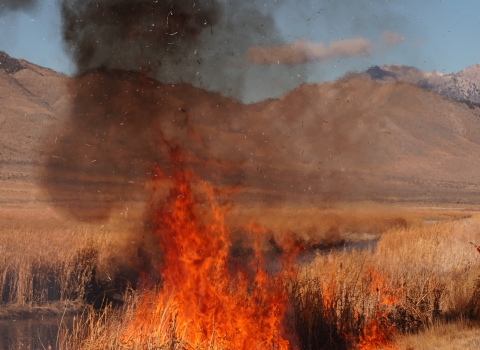The U.S. Fish and Wildlife Service (Service) is releasing draft revisions to the Mexican Wolf Recovery Plan, First Revision (2017 recovery plan) in order to improve protections for Mexican wolves in the wild.
“Mexican wolves continue to make progress toward their recovery goals here in the U.S., but human-caused mortality continues to be a concern as it could hinder future population growth,” said Brady McGee, the Mexican Wolf Recovery Coordinator for the U.S. Fish and Wildlife Service. “Addressing this threat will require the support of our partners, law enforcement and members of the public.”
On October 14, 2021, the District Court of Arizona remanded the 2017 recovery plan to the Service to address the threat of human-caused mortality, including illegal killing.
The revised draft plan includes new site-specific management actions to address the threat of human-caused mortality, including illegal killing. The draft revisions only address the part of the plan remanded by the court, and do not include any changes to the recovery strategy or criteria.
The 2017 recovery plan provides objective, measurable criteria which, when met, will ensure threats have been alleviated sufficiently for the Service to pursue delisting. The recovery plan uses the best available science to chart a path forward for the Mexican wolf that can be accommodated within the species’ historical range in the Southwestern United States and Mexico.
The following are some of the new site-specific recovery actions in the revised draft plan to address these threats in the U.S. and Mexico:
- Conduct education and outreach in local communities within occupied Mexican wolf range in the Mexican Wolf Experimental Population Area and other areas where wolves disperse in order to improve hunter, trapper, rancher, and public awareness and tolerance of wolves, including materials with biological and legal information and conflict reduction techniques;
- Increase law enforcement presence in areas identified as mortality hot spots to assist in public education, deter illegal killing, investigate wolf mortalities, and coordinate with law enforcement from other agencies;
- Install enhancements to facilitate Mexican wolf movement across existing and new roads and reduce vehicle collisions; and
- Implement livestock conflict avoidance measures in hotspots of depredation activity to reduce depredation-related wolf removals.
Human-caused mortality includes vehicle collisions and illegal killings (take). This take includes illegal shooting with a firearm or arrow and illegal trap-related mortalities by the public. In 2020 (the last year of published data), 14 wolves were identified as having been illegally killed and 6 were identified as having died from vehicle collisions. The wild population of Mexican wolves has continued to grow in recent years despite these mortalities. At the end of 2021, there were a minimum of 196 Mexican wolves in the United States (Arizona and New Mexico) and around 35 in Mexico.
The draft recovery plan will publish on April 14, 2022, and will be available for review at http://www.regulations.gov under Docket No. FWS-R2-ES-2022-0018. Public comments will be accepted 30 days from the date of publication in the Federal Register and may be submitted through http://www.regulations.gov by searching the docket number.
We encourage the public, federal and state agencies, tribes, and other stakeholders to review the proposal and provide comments. The Service will publish a final revised recovery plan for the Mexican wolf by the court-ordered date of October 14, 2022.
Learn more about the proposed recovery plan revision and the Mexican Wolf Program.



